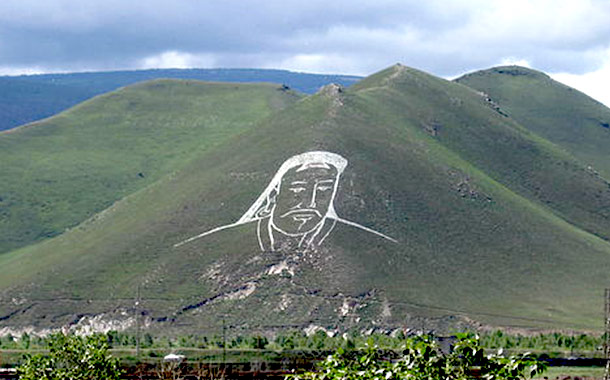<![CDATA[It turns out the Nazca region of Peru is not the only place on Earth where amazing land inscriptions can be seen. According to archaeologists, who made the discovery using Google Earth, more than 50 geoglyphs can be seen sprawled across the northern Kazakh landscape in central Asia. The geoglyphs came in various shapes and sizes, but one of the largest stood out because it was in the shape of a swastika (the Nazis used the swastika as their official symbol, but this geometric shape has been in use since long before modern Germany was even born). The findings were recently presented at the European Association of Archaeologist's annual meeting in Istanbul, Turkey. Teams from Kostanay University in Kazakhstan and Vilnius University in Lithuania have been studying the geoglyphs since last year. They have conducted archaeological excavations, aerial photography, dating, and ground-penetrating radar work to bolster their study. The shapes that the geoglyphs are built from include squares, crosses, swastikas and rings. They range from 90 to 400 meters, or 295 to 1312 feet in diameter, making some of them longer than a modern aircraft carrier. Like the geoglyphs in Nazca, they cannot be seen unless viewed from the sky. Geoglyphs have been found in various places around the world, although the ones at Nazca are the most popular. These earthen inscriptions were constructed by various cultures using different techniques and serving different purposes. One example is the thousands of wheel-shaped structures that were discovered in 2011 in the area between Syria and Saudi Arabia, in the Middle East. A year later, scientists discovered an elk-shaped geoglyph in Russia believed to be older than the Peruvian Nazca Lines. The scientists stated that most of the Kazakh geoglyphs were made of earthen mounds, while some were made using timber, including the swastika. The purpose of these structures remains a mystery, but the scientists have some ideas. During archaeological excavations, they found the remains of structures that seemed to be hearths, suggesting that the areas in which these geoglyphs were found were used for ritual practices. The researchers also believe that ancient tribes may have used these geoglyphs to mark their territory. Future research hopes to uncover the real reasons behind most of these land structures, and also solve the mystery behind why these geoglyphs were built in geometric shapes. The reason for the swastika is actually less of a mystery, as it is an ancient symbol that has been found throughout Europe and Asia. The world's most famous geoglyphs, the Peru Nazca Lines, predominantly feature animals such as hummingbirds, jaguars and snakes. They too range in size, and the largest one found to date is the figure of a pelican, which measures 285 meters, or 935 feet, across. These impressive structures have been found in other countries such as Brazil, the United Kingdom, and the South West United States. The discovery of these ancient marvels has been made easier over the last decade thanks to the introduction of Google Earth. Using this free and open technology, professionals and amateurs alike have been able to find many geological marvels.]]>
Massive Geoglyphs Uncovered in Kazakhstan
